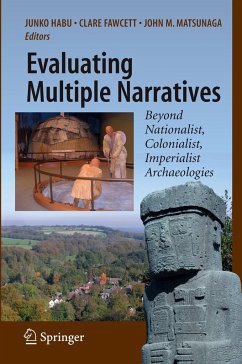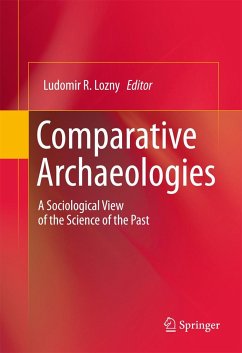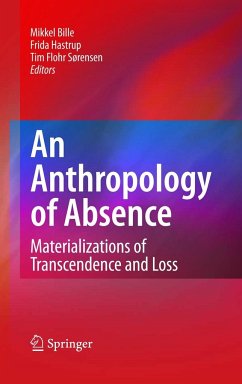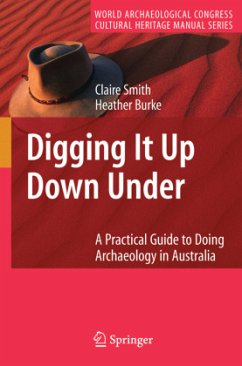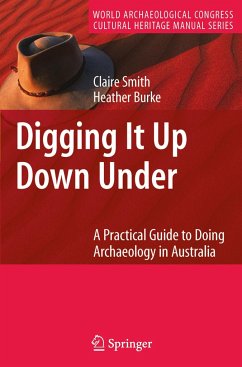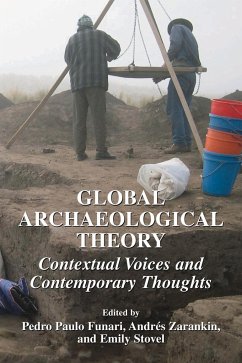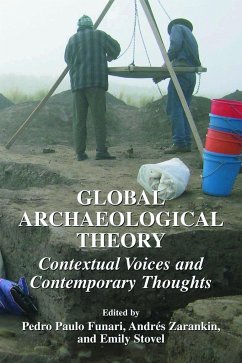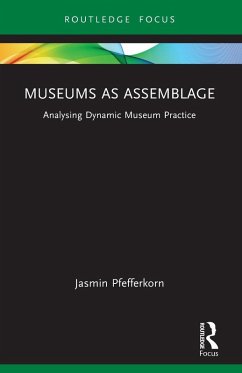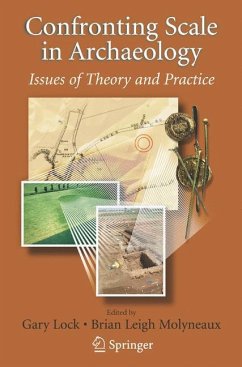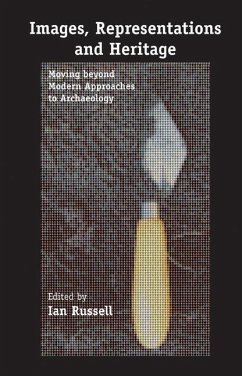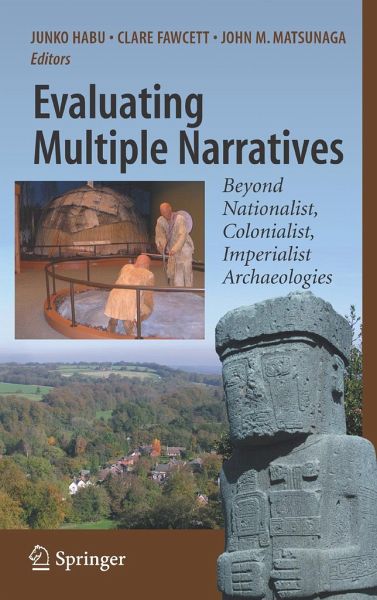
Evaluating Multiple Narratives
Beyond Nationalist, Colonialist, Imperialist Archaeologies
Herausgegeben: Habu, Junko; Fawcett, Clare; Matsunaga, John M.
Versandkostenfrei!
Versandfertig in 6-10 Tagen
38,99 €
inkl. MwSt.

PAYBACK Punkte
19 °P sammeln!
At the end of the 20th Century, archaeologists from non-Anglo-American countries started to become vocal about the "traditional" interpretations of history that archaeology was making. The "traditional" archaeology came from the predominantly white, male archaeologists from England and the United States going to other countries and interpreting the material culture from their point of view. This, of course, is still happening but is becoming less acceptable nor accepted by the global world of archaeology.The goal of this volume is to use archaeological case studies from around the world to eva...
At the end of the 20th Century, archaeologists from non-Anglo-American countries started to become vocal about the "traditional" interpretations of history that archaeology was making. The "traditional" archaeology came from the predominantly white, male archaeologists from England and the United States going to other countries and interpreting the material culture from their point of view. This, of course, is still happening but is becoming less acceptable nor accepted by the global world of archaeology.
The goal of this volume is to use archaeological case studies from around the world to evaluate the implications of providing alternative interpretations of the past. These cases also address key questions such as: Can multivocality (multiple interpretations of the past) be separate from the theory of contemporary Anglo-American archaeology; is multivocality relevant to local residents and non-Anglo-American archaeologists; and can the close examination of alternativeinterpretations contribute to a deeper understanding of subjectivity and objectivity of archaeological interpretation?
The contributors are at the forefront of archaeological theory research and the commentators are eminent archaeological theoreticians. This volume will also contribute to the debate about the social and political implications of archaeological practice.
The goal of this volume is to use archaeological case studies from around the world to evaluate the implications of providing alternative interpretations of the past. These cases also address key questions such as: Can multivocality (multiple interpretations of the past) be separate from the theory of contemporary Anglo-American archaeology; is multivocality relevant to local residents and non-Anglo-American archaeologists; and can the close examination of alternativeinterpretations contribute to a deeper understanding of subjectivity and objectivity of archaeological interpretation?
The contributors are at the forefront of archaeological theory research and the commentators are eminent archaeological theoreticians. This volume will also contribute to the debate about the social and political implications of archaeological practice.




